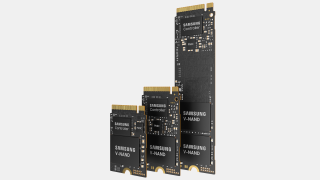
Microsoft’s DirectStorage API speeds up load times in games through asset compression/decompression algorithms handled by the SSD controller and GPU, enabling transfer of more data than the storage medium is normally capable of. It also reduces CPU load when dealing with NVMe requests, leading to faster and more efficient asset transfer from storage to graphics subsystem. DirectStorage has been shown to significantly improve data transfer rates even for SATA-interface SSDs. However, a recent Compusemble benchmark found that the difference between PCIe Gen3 and PCIe Gen5 drives may not be significant with DirectStorage.

The load times in Forspoken have significantly improved, so the difference between a top-of-the-line Phison E26 SSD with a PCIe Gen5 x4 interface and a well-established Adata XPG SX8200 Pro with a PCIe Gen3 x4 interface is only 3 seconds in a built-in benchmark that combines 7 different levels/scenes.
Though in theory the PCIe Gen3 drive is 32% slower than a PCIe Gen5 SSD, in practice, the difference is negligible. Moreover, a PCIe 5.0 x4 interface offers four times higher raw data throughput than a PCIe 3.0 x4 interface. This means that DirectStorage compression makes the performance of different SSDs comparable.
While currently only one game supports Microsoft DirectStorage, it still makes sense to get a PCIe Gen5 x4 drive for a new build. But once DirectStorage becomes more widespread, the SSD is expected to perform just as well as next-gen drives in games.
